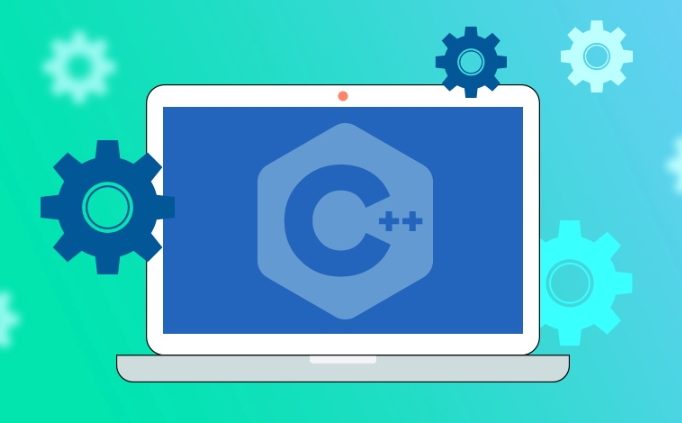How does std::move work in C ?
std::move does not actually move anything, it just converts the object to an rvalue reference, telling the compiler that the object can be used for a move operation. For example, when string assignment, if the class supports moving semantics, the target object can take over the source object resource without copying. Should be used in scenarios where resources need to be transferred and performance-sensitive, such as returning local objects, inserting containers, or exchanging ownership. However, it should not be abused, because it will degenerate into a copy without a moving structure, and the original object status is not specified after the movement. Appropriate use when passing or returning an object can avoid unnecessary copies, but if the function returns a local variable, RVO optimization may already occur, adding std::move may affect the optimization. Prone to errors include misuse on objects that still need to be used, unnecessary movement, and use of immovable types. In short, std::move is a prompt rather than a movement, and it needs to be understood and used reasonably.

std::move doesn't actually move anything. It's just a way to tell the compiler, “Hey, you can treat this object as temporary, feel free to steal its resources if needed.” Under the hood, it's a cast — nothing more.

What does std::move really do?
It casts an object to an rvalue reference. That's it. Once something is cast to an rvalue reference (like T&& ), the compiler considers it eligible for move operations.

For example:
std::string a = "hello"; std::string b = std::move(a);
Here, a is treated as a temporary, and b can take over a 's internal buffer without copying — if the string class supports move semantics.

So, std::move enables moves but doesn't perform them directly. The actual move happens in the move constructor or move assignment operator of the type you're working with.
When should I use std::move ?
You should use it when you're done with an object and want to transfer its resources somewhere else — especially when performance matters.
Common scenarios:
- Returning a local object from a function.
- Inserting a temporary into a container.
- Swapping or transferring ownership between objects.
But don't overuse it. If a type doesn't have a proper move constructor, std::move will fall back to a copy. Also, after using std::move , the original object is still valid but in an unspecified state — don't rely on its value afterward.
How does it interact with containers and functions?
When passing or returning objects, using std::move can avoid unnecessary copies — but only when appropriate.
For example, returning a local vector:
std::vector<int> make_big_vector() {
std::vector<int> temp(1000000);
return std::move(temp); // Not strictly needed here
} In this case, the compiler might already apply Return Value Optimization (RVO), so std::move isn't necessary and could even prevent RVO in some cases.
Another example: inserting into a vector:
std::vector<std::string> vs; std::string s = "abc"; vs.push_back(std::move(s)); // Now s is moved, not copied
If you don't std::move , push_back will call the copy constructor. Using std::move tells it to use the move constructor instead.
What's easy to get wrong?
- Moving from something you still need: After moving, the object is still around but in a valid but unspecified state. Don't assume it's empty or has any specific value.
- Using
std::moveunnecessarily: Like in return statements where RVO applications, addingstd::movecan hurt performance. - Trying to move non-movable types: If a class doesn't define move operations,
std::movewill just copy.
Also, be careful with generic code. Sometimes templates may deduce types incorrectly if you mix lvalues and rvalues unexpectedly.
So that's how std::move works — it's a signal, not an action. Use it where appropriate, understand what it enables, and let the compiler handle the rest.
Basically that's it.
The above is the detailed content of How does std::move work in C ?. For more information, please follow other related articles on the PHP Chinese website!

Hot AI Tools

Undress AI Tool
Undress images for free

Undresser.AI Undress
AI-powered app for creating realistic nude photos

AI Clothes Remover
Online AI tool for removing clothes from photos.

Clothoff.io
AI clothes remover

Video Face Swap
Swap faces in any video effortlessly with our completely free AI face swap tool!

Hot Article

Hot Tools

Notepad++7.3.1
Easy-to-use and free code editor

SublimeText3 Chinese version
Chinese version, very easy to use

Zend Studio 13.0.1
Powerful PHP integrated development environment

Dreamweaver CS6
Visual web development tools

SublimeText3 Mac version
God-level code editing software (SublimeText3)

Hot Topics
 What is a POD (Plain Old Data) type in C ?
Jul 12, 2025 am 02:15 AM
What is a POD (Plain Old Data) type in C ?
Jul 12, 2025 am 02:15 AM
In C, the POD (PlainOldData) type refers to a type with a simple structure and compatible with C language data processing. It needs to meet two conditions: it has ordinary copy semantics, which can be copied by memcpy; it has a standard layout and the memory structure is predictable. Specific requirements include: all non-static members are public, no user-defined constructors or destructors, no virtual functions or base classes, and all non-static members themselves are PODs. For example structPoint{intx;inty;} is POD. Its uses include binary I/O, C interoperability, performance optimization, etc. You can check whether the type is POD through std::is_pod, but it is recommended to use std::is_trivia after C 11.
 How to pass a function as a parameter in C ?
Jul 12, 2025 am 01:34 AM
How to pass a function as a parameter in C ?
Jul 12, 2025 am 01:34 AM
In C, there are three main ways to pass functions as parameters: using function pointers, std::function and Lambda expressions, and template generics. 1. Function pointers are the most basic method, suitable for simple scenarios or C interface compatible, but poor readability; 2. Std::function combined with Lambda expressions is a recommended method in modern C, supporting a variety of callable objects and being type-safe; 3. Template generic methods are the most flexible, suitable for library code or general logic, but may increase the compilation time and code volume. Lambdas that capture the context must be passed through std::function or template and cannot be converted directly into function pointers.
 What is the mutable keyword in C ?
Jul 12, 2025 am 03:03 AM
What is the mutable keyword in C ?
Jul 12, 2025 am 03:03 AM
In C, the mutable keyword is used to allow the object to be modified, even if the object is declared as const. Its core purpose is to maintain the logical constants of the object while allowing internal state changes, which are commonly found in cache, debug counters and thread synchronization primitives. When using it, mutable must be placed before the data member in the class definition, and it only applies to data members rather than global or local variables. In best practice, abuse should be avoided, concurrent synchronization should be paid attention to, and external behavior should be ensured. For example, std::shared_ptr uses mutable to manage reference counting to achieve thread safety and const correctness.
 What is a null pointer in C ?
Jul 09, 2025 am 02:38 AM
What is a null pointer in C ?
Jul 09, 2025 am 02:38 AM
AnullpointerinC isaspecialvalueindicatingthatapointerdoesnotpointtoanyvalidmemorylocation,anditisusedtosafelymanageandcheckpointersbeforedereferencing.1.BeforeC 11,0orNULLwasused,butnownullptrispreferredforclarityandtypesafety.2.Usingnullpointershe
 What is an abstract class in C ?
Jul 11, 2025 am 12:29 AM
What is an abstract class in C ?
Jul 11, 2025 am 12:29 AM
The key to an abstract class is that it contains at least one pure virtual function. When a pure virtual function is declared in the class (such as virtualvoiddoSomething()=0;), the class becomes an abstract class and cannot directly instantiate the object, but polymorphism can be realized through pointers or references; if the derived class does not implement all pure virtual functions, it will also remain an abstract class. Abstract classes are often used to define interfaces or shared behaviors, such as designing Shape classes in drawing applications and implementing the draw() method by derived classes such as Circle and Rectangle. Scenarios using abstract classes include: designing base classes that should not be instantiated directly, forcing multiple related classes to follow a unified interface, providing default behavior, and requiring subclasses to supplement details. In addition, C
 How to use OpenCV with C for image processing?
Jul 09, 2025 am 02:22 AM
How to use OpenCV with C for image processing?
Jul 09, 2025 am 02:22 AM
Using OpenCV and C for image processing is not complicated. You can quickly get started by mastering the basic process and common functions. 1. Installation and environment configuration: Ensure that OpenCV is installed correctly, Linux can be installed with package manager, Windows can use vcpkg or manually configure the path, and test whether it is normal through a simple program; 2. Basic operations of images: use cv::imread() to read, cv::imshow() to display, cv::imwrite() to save images, and pay attention to the necessity of path judgment and waitKey(); 3. Common image processing operations: including grayscale, Gaussian blur, Canny edge detection and threshold processing, which are usually used in the preprocessing stage; 4. Custom convolution kernel
 What is memory alignment and why is it important in C ?
Jul 13, 2025 am 01:01 AM
What is memory alignment and why is it important in C ?
Jul 13, 2025 am 01:01 AM
MemoryalignmentinC referstoplacingdataatspecificmemoryaddressesthataremultiplesofavalue,typicallythesizeofthedatatype,whichimprovesperformanceandcorrectness.1.Itensuresdatatypeslikeintegersordoublesstartataddressesdivisiblebytheiralignmentrequiremen
 How to generate a UUID/GUID in C ?
Jul 13, 2025 am 02:35 AM
How to generate a UUID/GUID in C ?
Jul 13, 2025 am 02:35 AM
There are three effective ways to generate UUIDs or GUIDs in C: 1. Use the Boost library, which provides multi-version support and is simple to interface; 2. Manually generate Version4UUIDs suitable for simple needs; 3. Use platform-specific APIs (such as Windows' CoCreateGuid), without third-party dependencies. Boost is suitable for most modern projects, manual implementation is suitable for lightweight scenarios, and platform API is suitable for enterprise environments.







